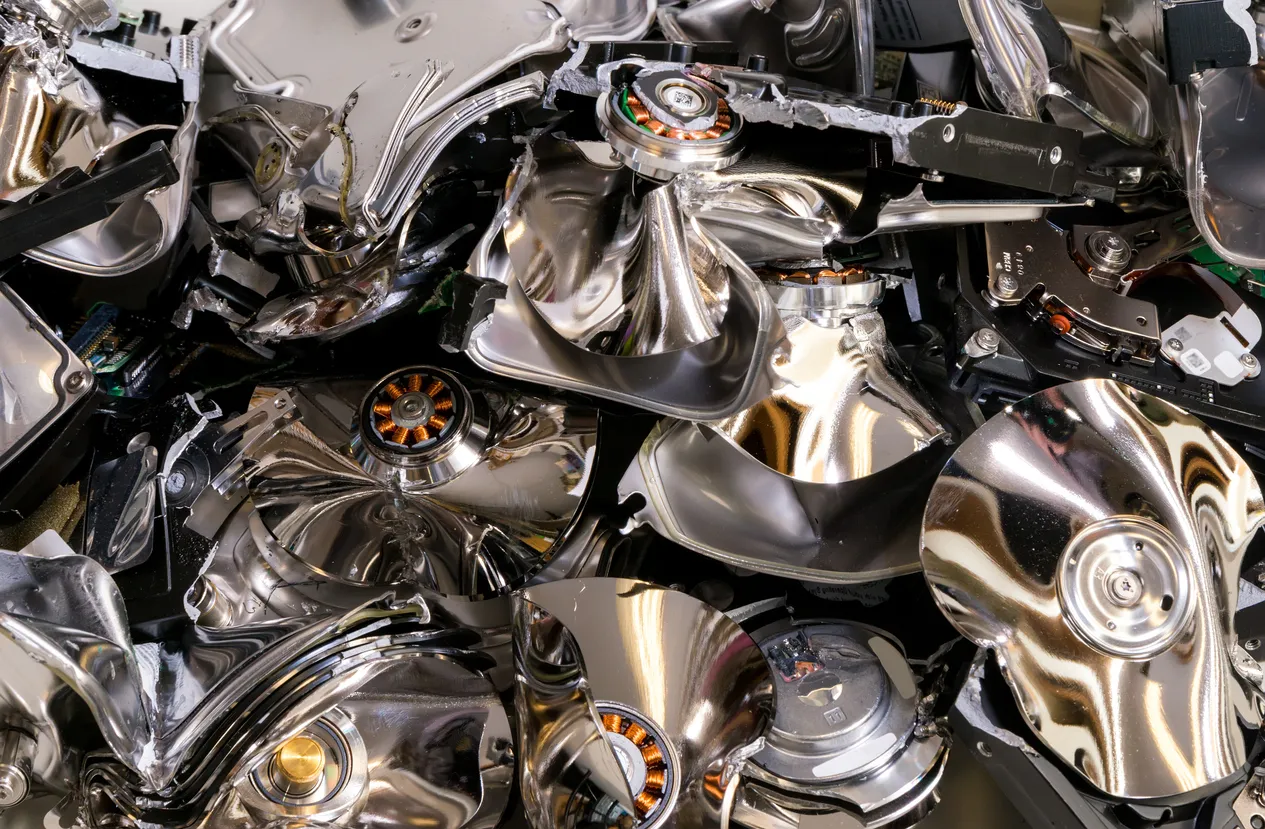Why Secure Hard Drive Destruction Matters
- GDPR & UK Data Protection Act 2018
- ISO 27001 – Information Security Management
- NCSC & NIST 800-88 guidelines
- ICO best practice for data sanitisation and disposal
What Is Onsite Hard Drive Destruction?
✅ Benefits of Onsite Destruction
- Immediate chain of custody – no drives leave your premises before destruction.
- Visible proof of destruction – your team can witness the process firsthand.
- Ideal for highly sensitive environments such as government, defence, or financial institutions.
⚠️ Considerations
- Operational disruption: Mobile shredding units need site access, power and space.
- Cost: Onsite services can be more expensive for smaller volumes.
- Scheduling: Availability of mobile shredders may affect timelines.
What Is Offsite Hard Drive Destruction?
✅ Benefits of Offsite Destruction
- Cost-effective for medium to large volumes.
- Minimal disruption to business operations.
- Carried out in purpose-built environments with advanced shredders and security.
- Ideal for regular refresh cycles or bulk disposals.
⚠️ Considerations
- Relies on secure logistics: You must trust the provider’s transport and handling processes.
- Certification is post-event: Destruction certificates are issued after processing.
Compliance & Security Considerations
- Accredited provider: ISO 27001, ISO 9001, ISO 14001, Cyber Essentials Plus
- Secure chain of custody: From collection to destruction, every step is logged
- Certificates of Destruction: Itemised, timestamped, and linked to asset serial numbers
- Environmental responsibility: Ensuring shredded drives are processed ethically, aligned with WEEE regulations
Environmental & Operational Factors
| Factor | Onsite Destruction | Offsite Destruction |
|---|---|---|
| Logistics | Requires space for mobile unit | Drives securely transported |
| Speed | Instant | Usually processed within agreed SLAs |
| Cost | Higher for small jobs | More efficient for bulk |
| Environmental | Shredded waste later transported for processing | Waste processed immediately at facility |
| Disruption | May cause temporary site disruption | Minimal onsite presence |
Choosing the Right Option for Your Organisation
- Choose onsite destruction if you require immediate proof, have extremely sensitive data, or limited trust in third-party logistics.
- Choose offsite destruction if you need scalable, cost-effective solutions with minimal operational impact.





